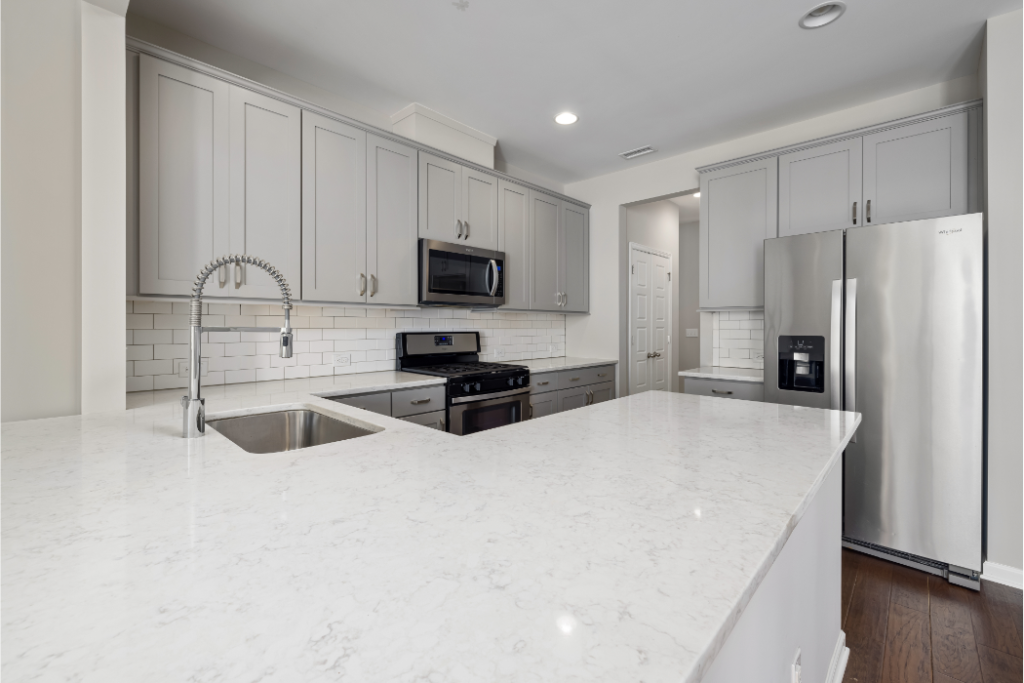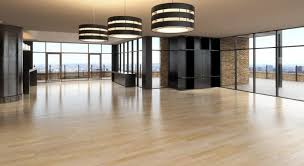The kitchen is the heart of the home, a place for whipping up culinary delights, sharing meals with loved ones, and tackling everyday tasks. But a poorly designed kitchen can quickly turn this haven into a frustrating maze. One crucial element that significantly impacts your kitchen’s efficiency is the counter height.
The standard counter height, typically ranging from 36 to 38 inches (91 to 97 cm), is designed to accommodate a wide range of users. However, achieving true efficiency goes beyond just following a number. Here’s a deep dive into how the perfect standard counter height can transform your kitchen into a streamlined workspace.
Understanding the Science of Comfort:
Our bodies are built for certain postures. When working in the kitchen, the ideal counter height allows you to maintain good posture while minimizing strain. Imagine yourself chopping vegetables or kneading dough. The perfect counter height positions your elbows at a comfortable 90-degree angle when your arms are bent at your sides. This reduces stress on your back and shoulders, leading to less fatigue and a more enjoyable cooking experience.
Learn more about Island Kitchen Chimneys

The Benefits of Standard Counter Height:
While customizing counter heights for individual needs is an option, there are several advantages to sticking with the standard range:
Universal Comfort
Standard counter heights cater to a broad spectrum of users. Whether you’re tall or short, the design allows for comfortable working positions with minimal adjustments. Universal Comfort can hold several meanings. It could refer to a general feeling of well-being and ease in one’s surroundings. Imagine sinking into a plush couch after a long day, that’s universal comfort. It could also describe a company name, perhaps specializing in HVAC systems or home furnishings that promote relaxation. Finally, it might be a design principle that prioritizes user comfort in everything from furniture dimensions to room temperature.
Ergonomic Design
Pre-built cabinets and countertops are readily available in standard sizes, ensuring proper spacing between the countertop and the bottom of upper cabinets. This eliminates awkward reaching or cramped work areas. Ergonomic design isn’t just about comfort; it’s about creating harmony between people and the objects they interact with. By considering factors like body mechanics, posture, and ease of use, ergonomics aims to minimize strain and maximize efficiency. Whether it’s a perfectly angled office chair or a kitchen counter designed for comfortable chopping, ergonomic design prioritizes human needs, leading to a safer, more productive, and ultimately, more enjoyable experience.
Aesthetics and Flow
Maintaining a consistent counter height throughout your kitchen creates a visually cohesive space. This promotes a sense of flow, making your kitchen feel more organized and efficient. When it comes to interior design, achieving a balance between aesthetics and flow is paramount. Aesthetics refer to the visual appeal of a space, the way colors, textures, and furniture selections come together to create a desired mood or style.
Flow, on the other hand, focuses on the functionality and ease of movement within a room. A well-designed space should be both pleasing to the eye and intuitive to navigate, allowing for seamless transitions between different areas. By carefully considering both aesthetics and flow, you can create a harmonious and inviting environment that’s not just beautiful, but also a pleasure to live in.
Cost-Effectiveness
Standard-sized countertops and cabinets are generally more affordable than custom options. This is a significant advantage if you’re working with a budget. Cost-effectiveness is the golden key to maximizing value. It’s about getting the most bang for your buck, ensuring that the resources you invest (money, time, effort) deliver the desired outcome without unnecessary expenditure. In a nutshell, it’s about achieving smart, strategic choices that optimize results while minimizing waste.

Finding Your Perfect Fit:
While the standard height offers a solid starting point, there’s always room for personalization. Here are some tips to ensure your standard counter truly maximizes efficiency:
Consider Your Height
If you fall outside the average height range, a slight adjustment might be necessary. For taller individuals, raising the counter by an inch or two using risers can provide more back support. Conversely, shorter individuals might benefit from lowering the counter slightly for easier access to work surfaces.
Think About Activities
Do you spend most of your time chopping vegetables or washing dishes? If you’re primarily standing and prepping food, a slightly higher counter might be ideal. Conversely, if dishwashing is your main task, a lower counter can alleviate stress on your back while bending over the sink.
Test it Out
Before committing to a specific height, visit a kitchen showroom or cabinetry store. Test out different counter heights by mimicking your typical kitchen tasks. This will give you a good sense of what feels most comfortable and efficient.
Optimizing Your Kitchen Layout:
Beyond counter height, consider these additional elements to maximize your kitchen’s efficiency:
Proper Cabinet Depth
Standard cabinet depth is typically 24 inches (61 cm). This allows for ample storage space without creating a cramped feeling in the kitchen.
Clearance for Appliances
Ensure enough space between the countertop and the bottom of wall-mounted appliances like microwaves or ovens. This allows for easy operation and prevents strain on your arms when reaching for controls.
Accessibility Features
If you have mobility limitations, consider incorporating pull-out shelves, lower cabinet sections, and easy-to-grab handles for improved accessibility.

The Final Touches:
Once you’ve established the perfect standard counter height and optimized your layout, here are some finishing touches for peak kitchen efficiency:
Invest in Comfortable Flooring
Standing for long periods can be tiring. Opt for anti-fatigue mats or cushioned flooring to provide additional comfort while you work. Don’t forget about your feet! Invest in comfortable flooring that provides support and reduces fatigue. Plush carpeting in high-traffic areas like the kitchen can be impractical, but consider cushioned vinyl or cork options. Anti-fatigue mats strategically placed near the sink or stove offer targeted comfort. Remember, a happy kitchen starts with happy feet!
Organize Your Workspace
Combat clutter and create a smooth workflow by decluttering countertops and strategically storing your essentials. Utilize drawer dividers, utensil organizers, and labeled containers to keep everything within easy reach. Designate specific zones for tasks like food prep, baking, and dishwashing. This streamlined organization will minimize wasted time searching for tools and ingredients, allowing you to focus on the joy of cooking.
Embrace Multi-Functional Furniture
For those tight on space, embrace multi-functional furniture! Folding tables that tuck away when not in use, portable islands that offer additional prep or dining surfaces, and space-saving cabinets with built-in organizers can all maximize your kitchen’s efficiency. With a little creativity, you can transform a standard-sized kitchen into a haven of functionality without sacrificing style or comfort.
Conclusion
The perfect standard counter height isn’t just about a number; it’s about creating a kitchen that works seamlessly for you. By considering your needs, body mechanics, and incorporating a few thoughtful design features, you can transform your kitchen into a space that fosters culinary creativity, maximizes efficiency, and makes spending time there a joy. Remember, the perfect kitchen is one that allows you to cook comfortably and efficiently, no matter your height or culinary style.







